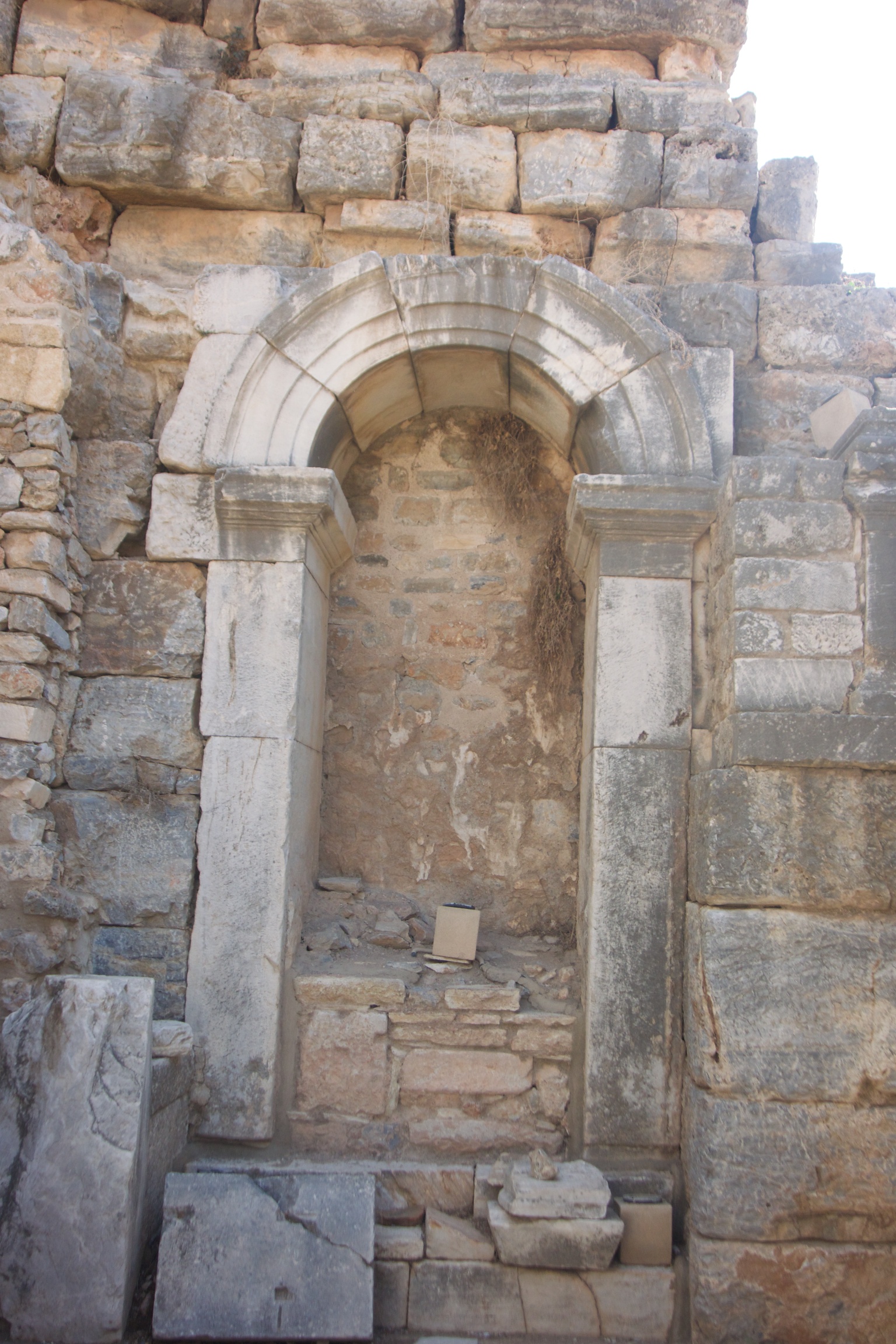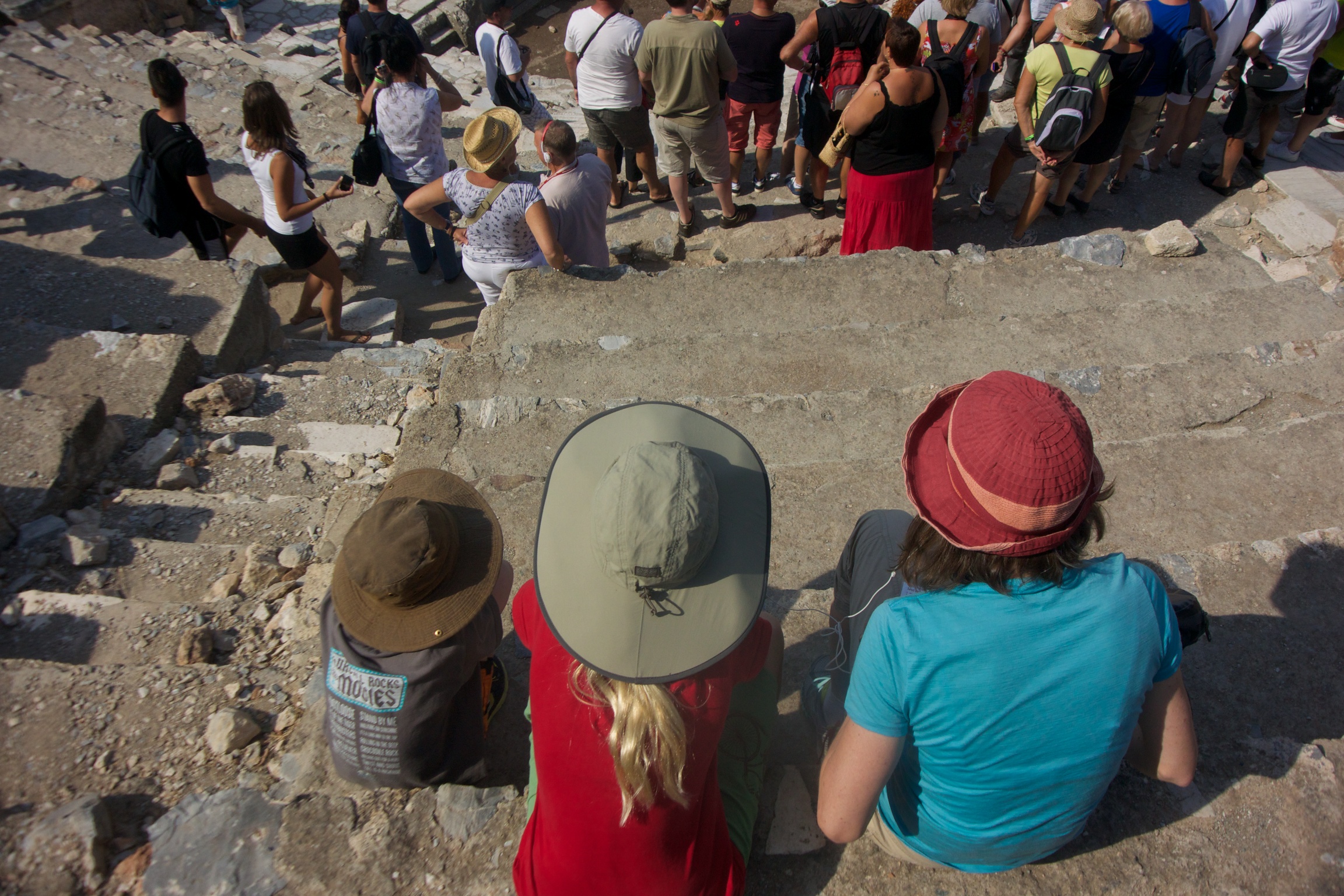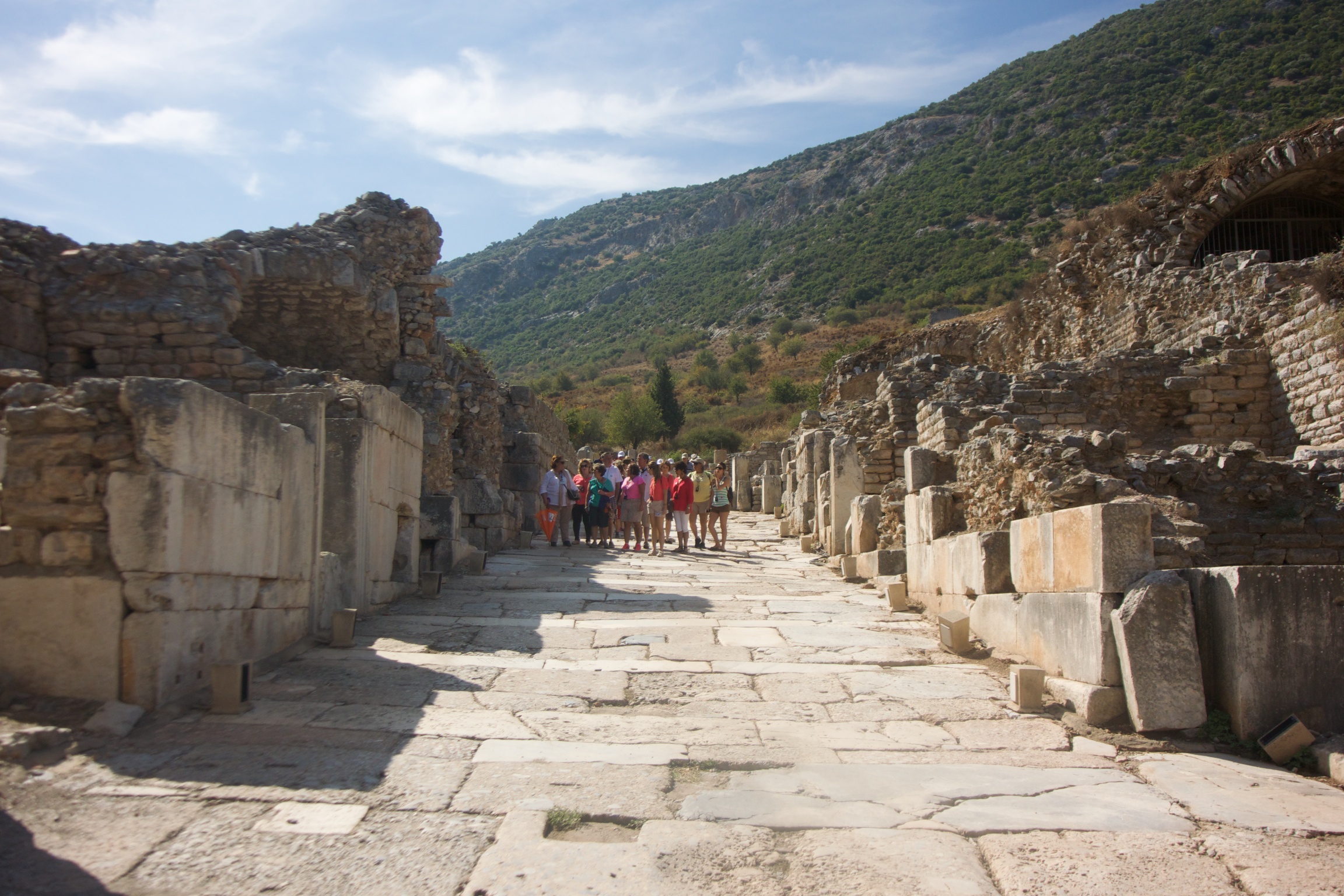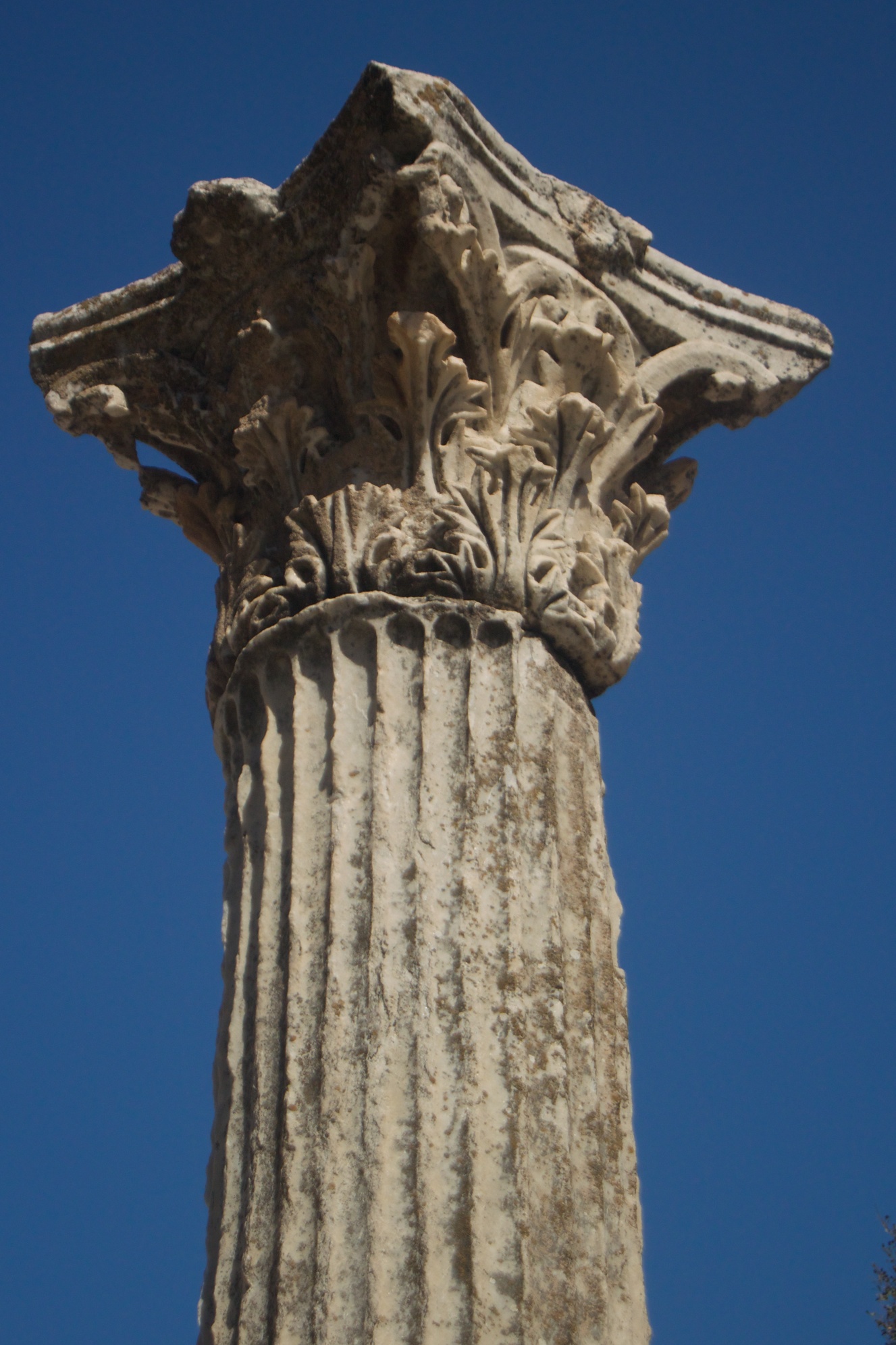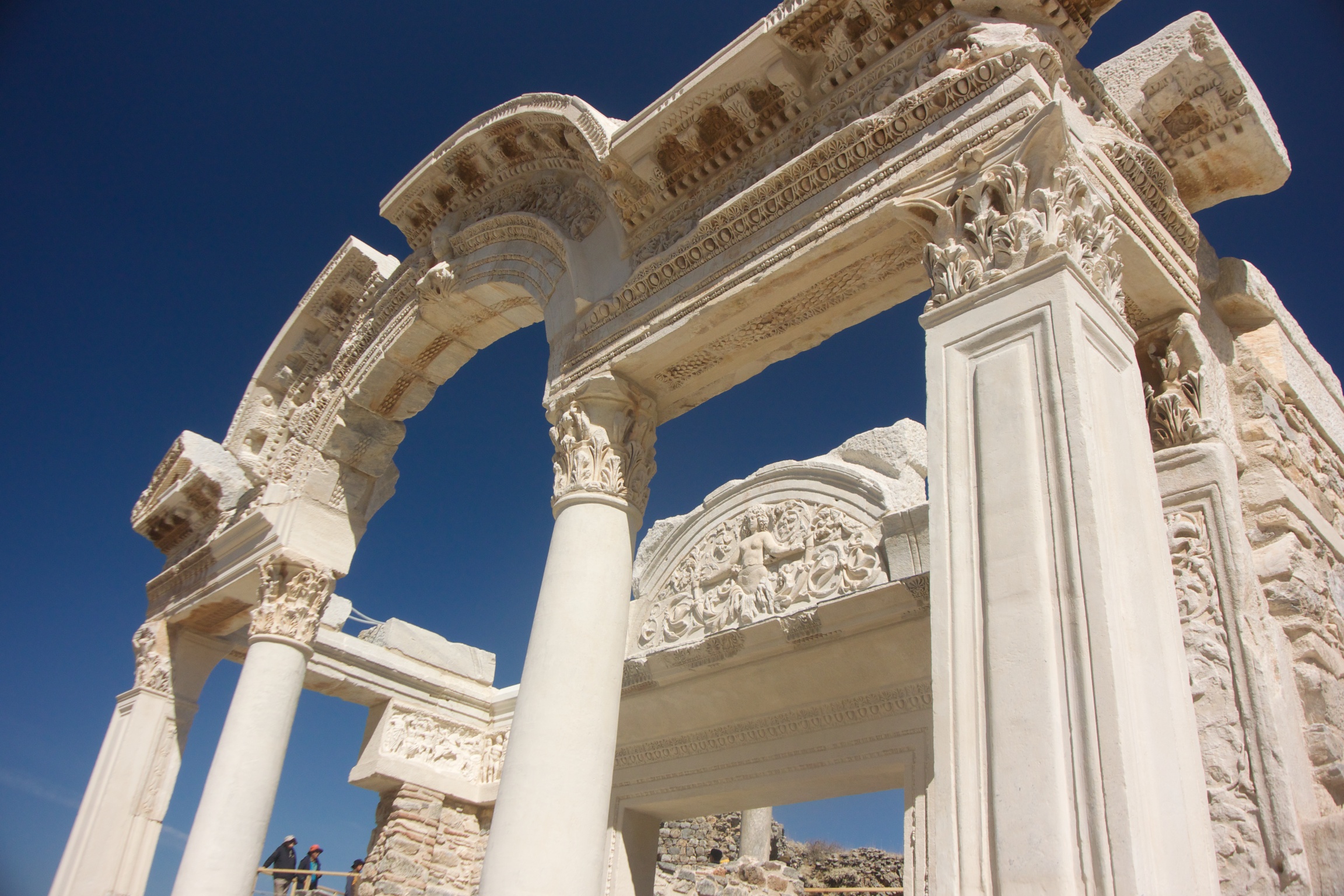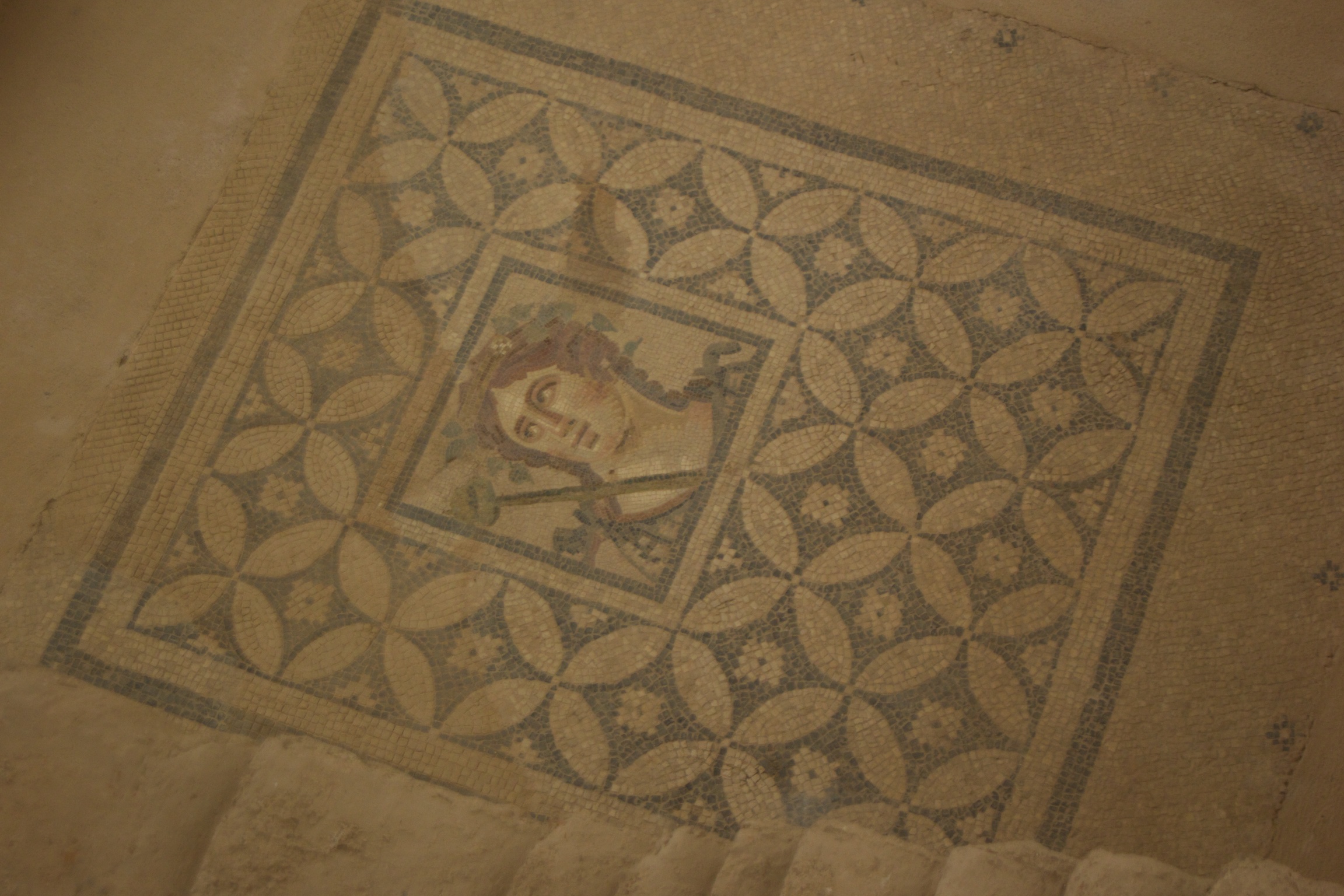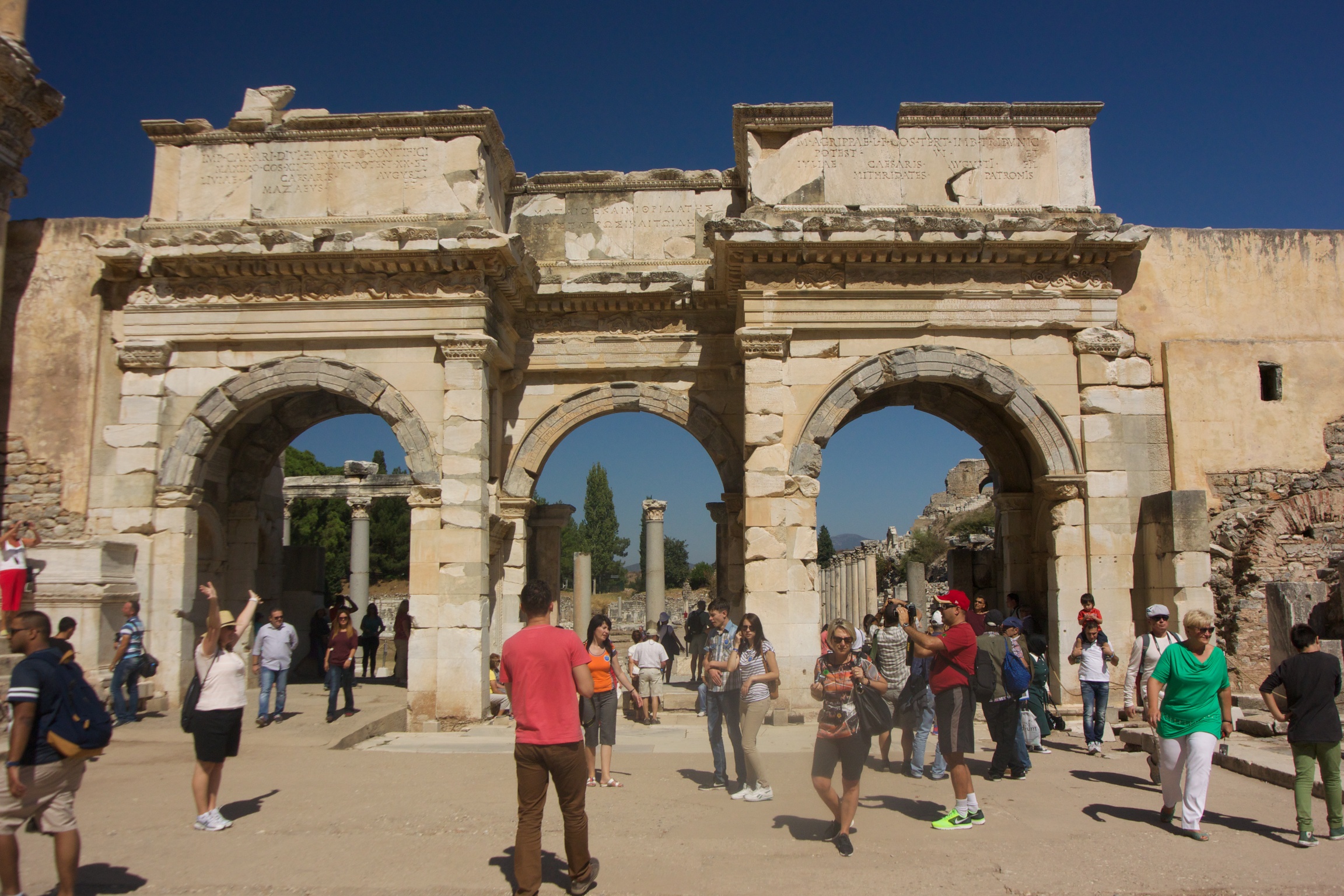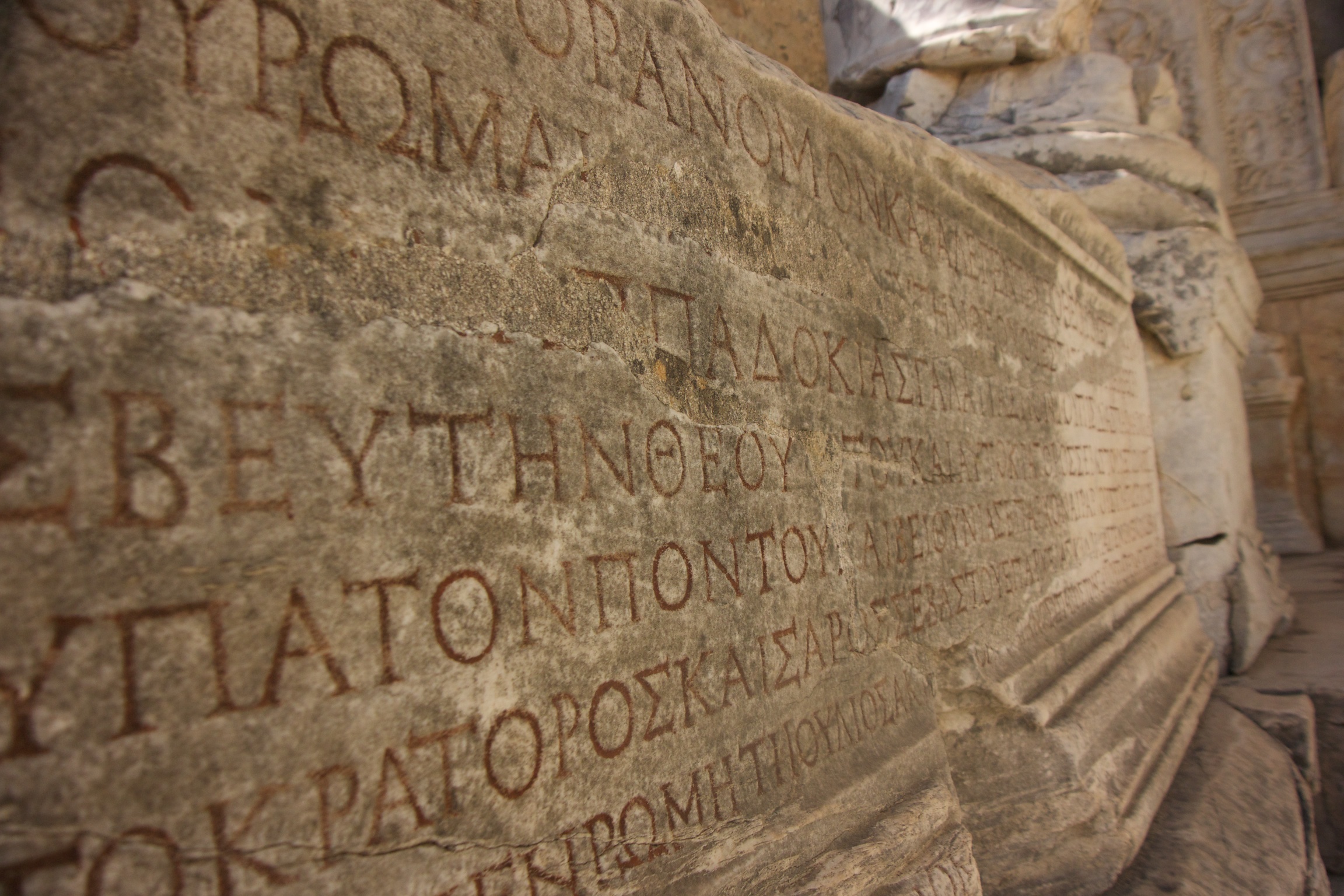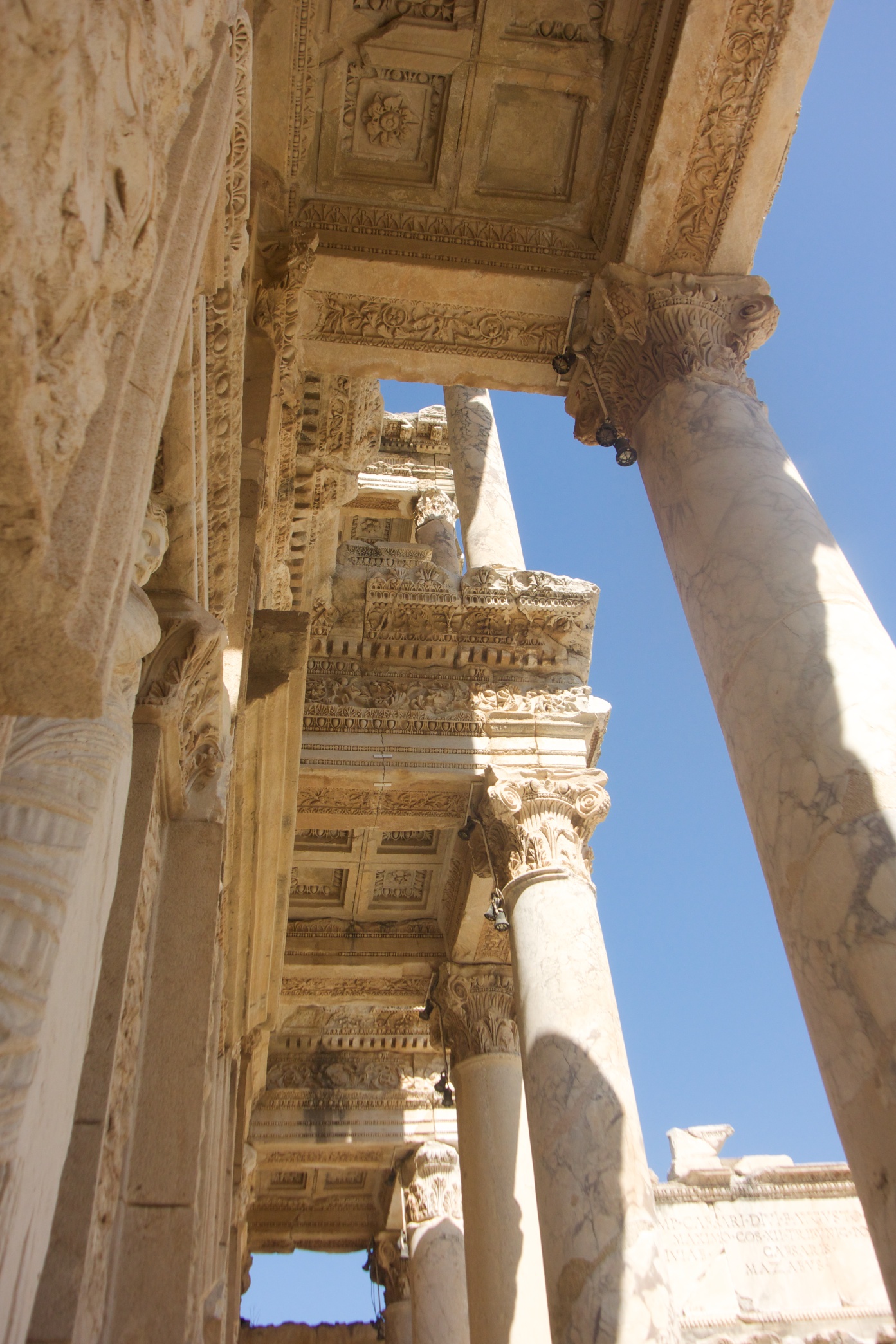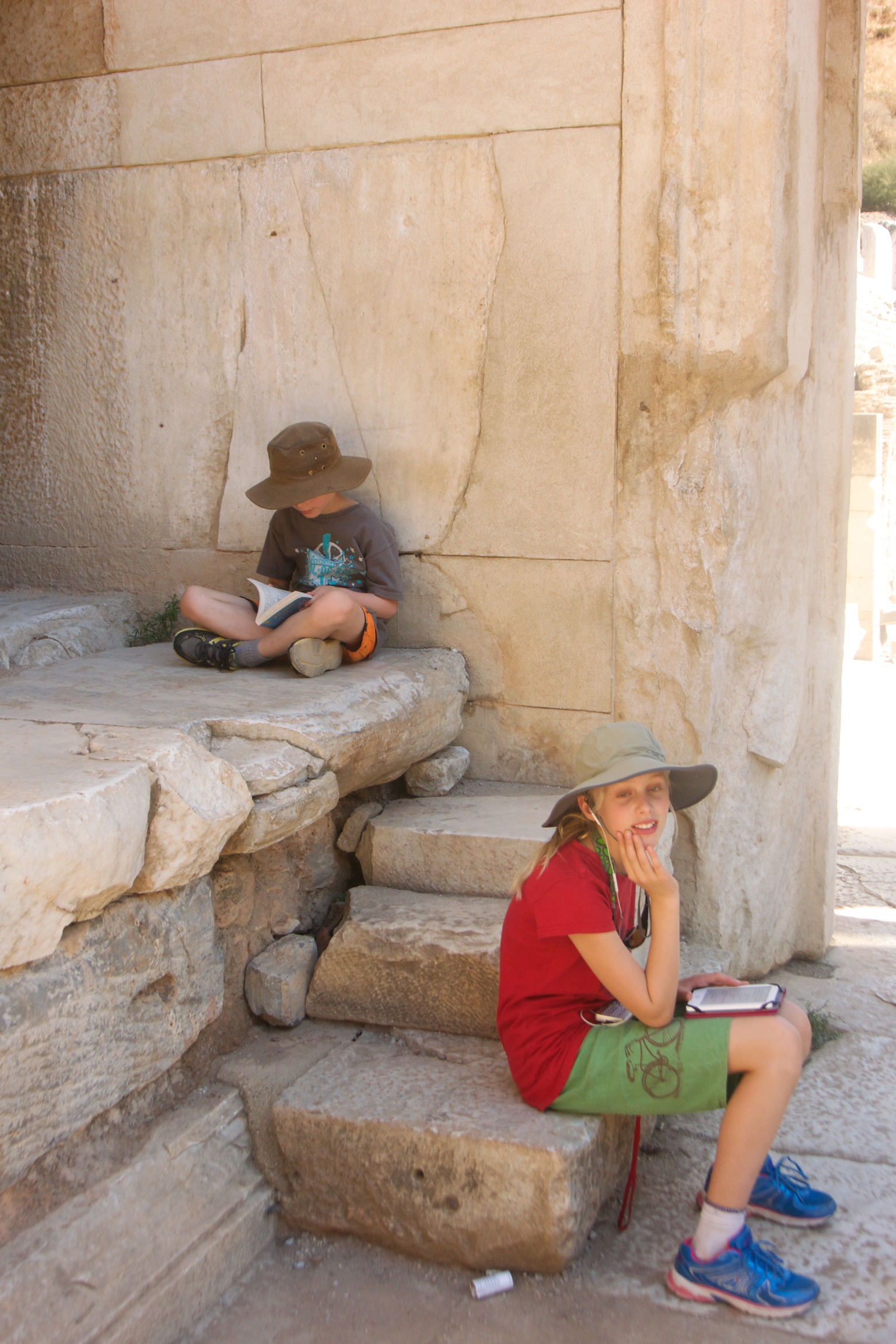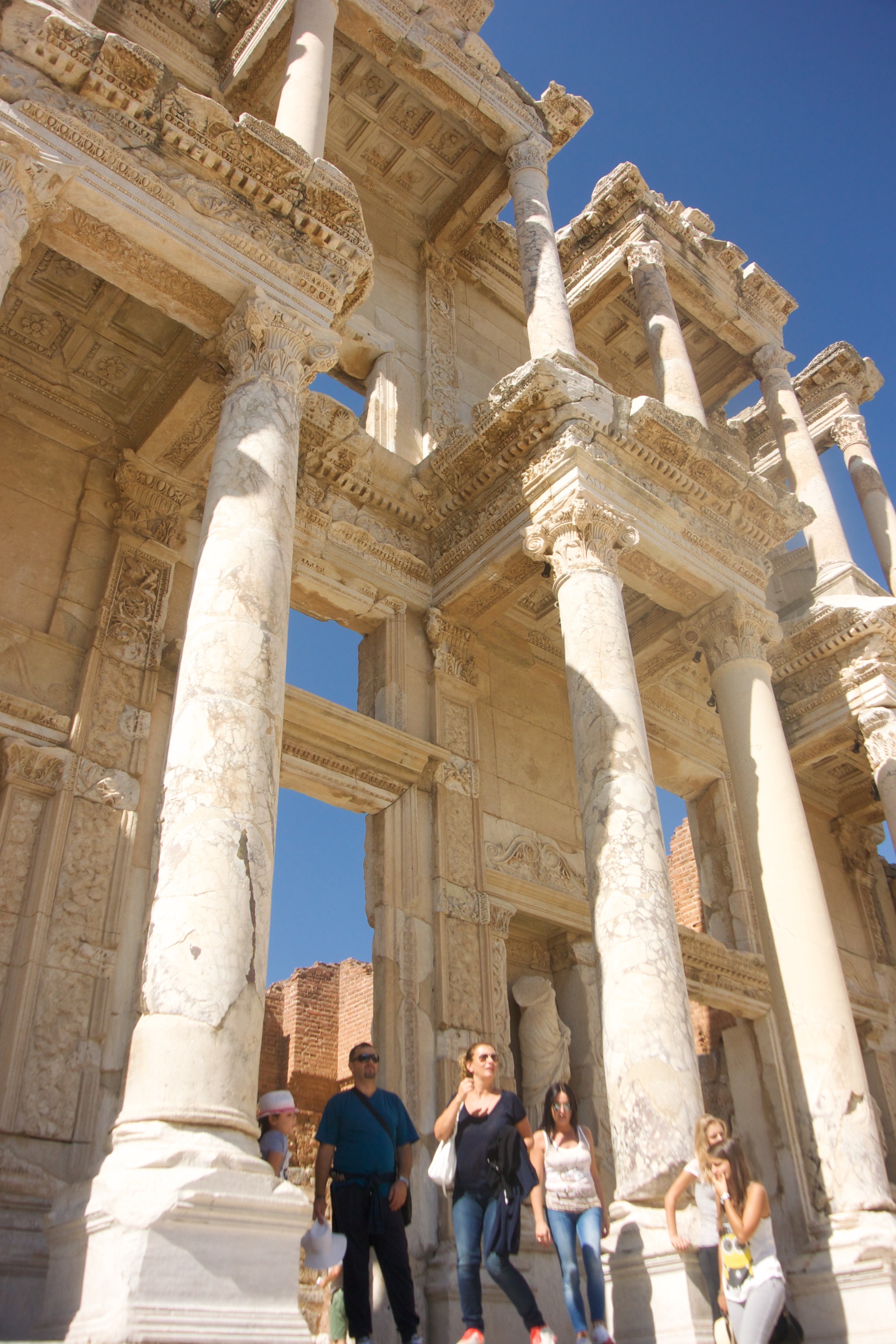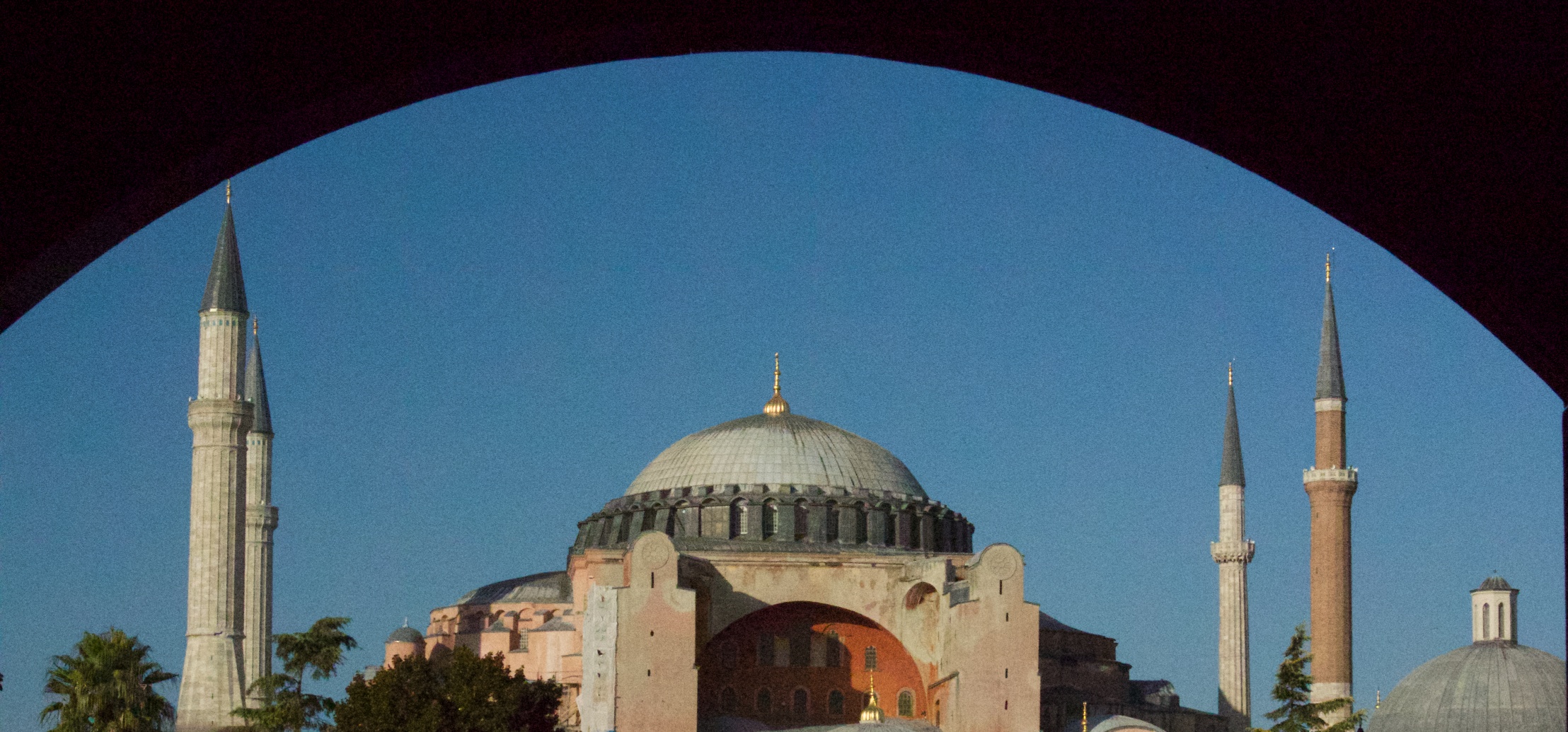Road Scholars' Report: Ephesus
In which our Road Scholars, Zoë and Isaac, report live from the Ancient City of Ephesus, near modern-day Selcuk, Turkey.
Ephesus was a Greco-Roman city that was founded in the 10th Century BC. People lived there until around 700 AD when it was abandoned.
On the right is a simple map of the Ephesus site (click on the map to enlarge it).
Archaeologists believe that the excavated ruins are only about 20% of the original city.
Road Scholar, Isaac Wind
Isaac's Highlights
The Theatre at Ephesus
The Theatre
Up to 25,000 people could sit in this theatre in Ephesus, which is bigger then TD place in Ottawa, but smaller then Wembley stadium in London. At the Theatre my Mom & I saw some Dutch people singing hymns. Back in the day when there were no microphones, people would just talk ( not yell) at the bottom of the theatre and everyone could hear them. Amazing, eh?
An exhibit of the archaeological excavation of the Terrace Houses at Ephesus
The Terrace Houses
There were 6 "Terrace Houses" where wealthier citizens of Ephesus lived. The houses were stacked up the side of the hill. The houses had heating, running water, and bath tubs. The floors were made out of marble and the walls were made of stones. There were mosaics of Greek mythology on some of the walls. Now archaeologists are studying the houses under a big shelter. If the houses weren't made out of stone, and not in ruins, I might like to live in one of these houses.
The facade of the Library of Celsus
The Celsus Library
The Celsus Library could hold up to 12,000 scrolls, and keep them safe from heat and humidity.It was the third largest Library in the Ancient World.
Zoe reading on her Kobo and Isaac reading "Diary of a Wimpy Kid" in the Celsus Library.
Zoe, Hat Acrobat
Zoe's report
In Ephesus, there are a bunch of old rocks :-). Almost everything was made of marble, although some buildings were made of bricks plated with marble.
Celsus Library facade
The Goddess Nike -- look for the swoosh!
The Celsus Library
The Celsus Library had a cool facade, but interior was not so cool because the scrolls were no longer there and the stone work was way less intricate.
The Goddess, Nike
There was a marble frieze of the goddess Nike (left), who was the goddess of victory, (not running shoes).
The Theatres
There were two amphitheatres:
- the Odeon , which held up to 5,000 people and was used for meetings, and,
- the Theatre, (left) had a capacity of 25,000, and was used for dramas, concerts and later gladiatorial combats.
The acoustics in the large amphitheatre were so good that If someone were to stand on the stage and project their voice a bit, they could be heard by every member of the audience, provided there was not to much back-round noise.
More Photos
Here are a few more photos that we took while in Ephesus.

